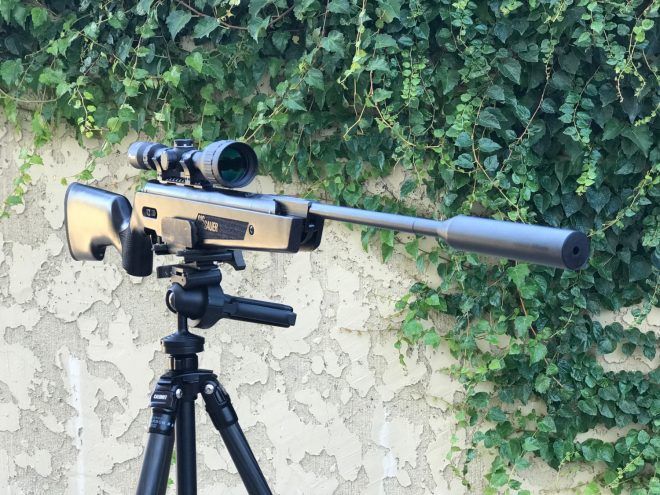Here is something a little different, an Air Rifle by SIG Sauer. When Pete first offered up a SIG Sauer Air Rifle for review I thought he was talking about the SIG MPX. I had one and while it is a fun toy, it is not really that great. Pete then told me it was for their APS20 with integrated suppressor. I was genuinely curious how good this $640 air rifle could be.
Getting Acquainted With The ASP20

I will be honest, I have not shot or played with a break action air rifle in a very long time. The last time I can think of shooting one was when I was a kid in elementary school shooting GI Joe figures as targets in my backyard.
This ASP20 features a laminate wood stock. It is rather slick but has lasered checkering on the grip and forend. Taking a closer look at the firing controls, the ASP20 has a straight bow trigger that is adjustable from 2.5-4lbs. The gun with the scope weighs 9lbs 12 oz and is 45.5″ long.

The safety is a sliding style that is ambidextrous so you can manipulate the safety even if you are left handed.

The stock resembles a typical precision style stock. The grip is more vertical and the bottom of the stock has a cut out for your support hand. The section behind the hand cutout is relatively flat making it perfect for use with a rear bag.
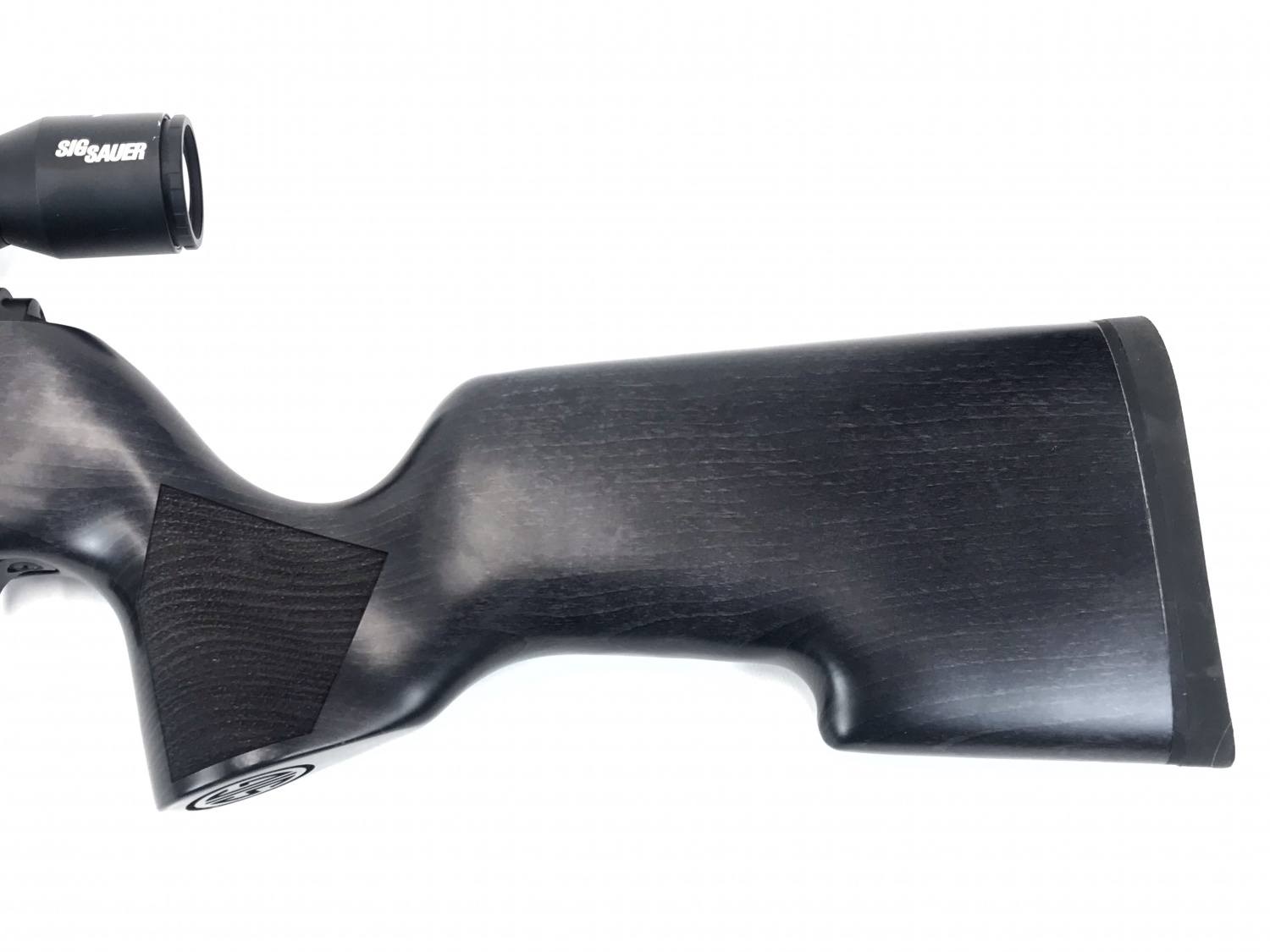
The ASP20 barrel features a proprietary drill-pinned breech wedge lock system for enhanced accuracy. You can see the two triangle shaped protrusions on the sides near the top of the barrel.

The ASP20 has a permanently attached suppressor.


Using a fiberoptic flashlight attachment I could see that it has baffles that look like a cylinder with square holes. I wonder if K baffles would work better? Are air guns typically loud without the suppressor?
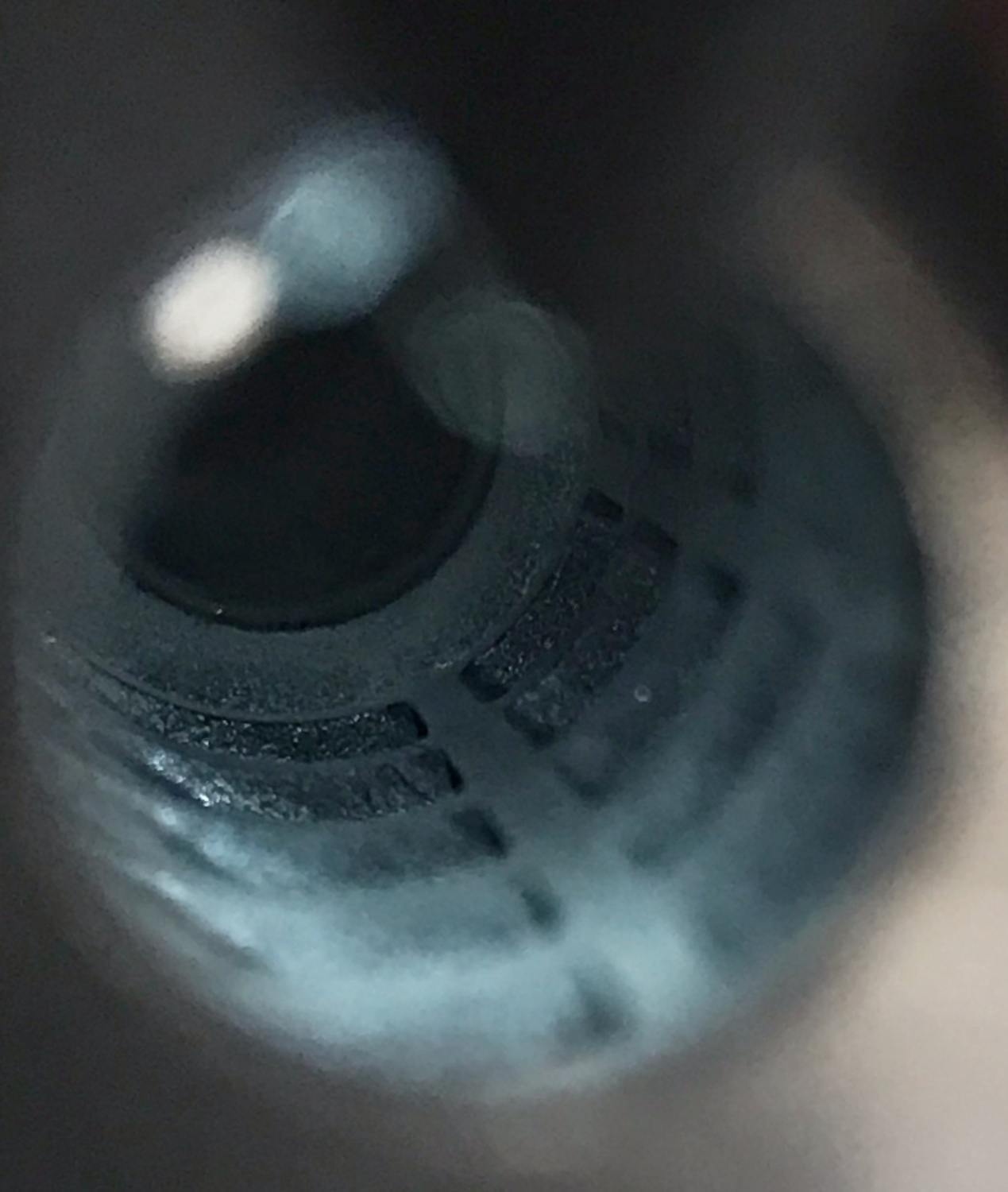
As I said, I am not an air gun shooter so there were some features that seemed lacking in the ASP20. There are no sling mounts while the polymer stock version appears to have sling mounts. I suppose with the fancier wood stock you would not really be carrying this gun on a sling walking through brush and risk scratching it. A more critical issue for me was the fact that I could not use a bipod since it is a break barrel.

Shooting The ASP20
Since I could not use a bipod I started to wonder “How does one shoot a break barrel?” and Pyramid Air had an interesting video regarding this exact conundrum. Tom of Pyramid Air explains something he calls the “Artillery Hold”. It is specifically used with spring-powered air rifles.
The ASP20 uses a gas piston in lieu of a steel coiled spring. But the physics are similar. You have a piston slamming forward pushing air to push the pellet out the barrel. Because of this, you have a forward recoil followed by a rearward recoil from the air pushing against the pellet.
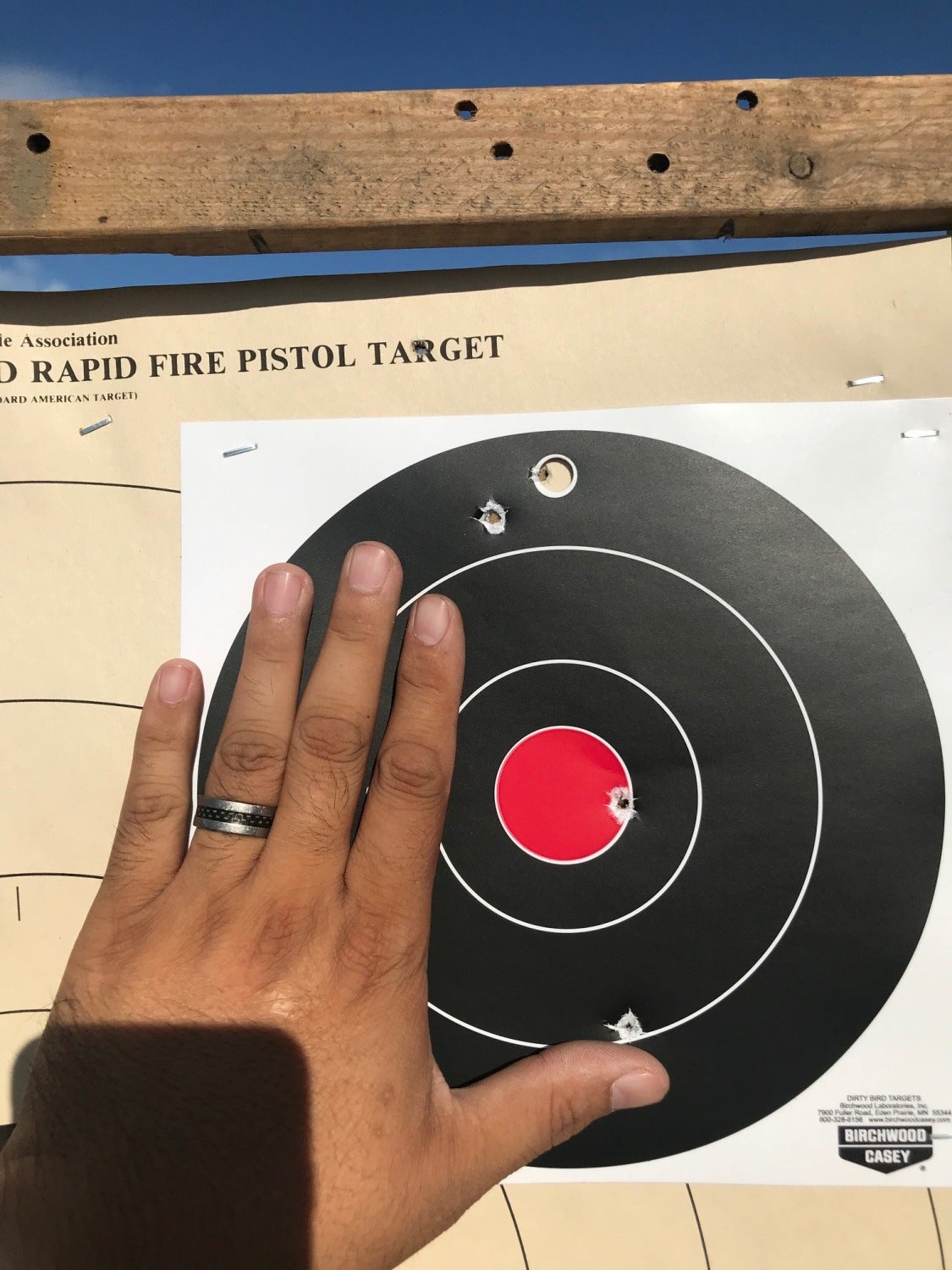
Ignore the shots below. That was from me playing around. The two shots at the top were my attempt to hit the hole in the target at 50 yards.
The groupings at 50 yard is not great but I am sure this is mostly my fault and a tiny bit the ammo. I used Crossman 14.3gr .22cal pellets. The gun reportedly works better with some fancier ammo that SIG Sauer makes for it but I could not find any locally. So I figured I would soldier on with what I have and focus on the artillery hold. I did notice a decent improvement trying this technique. After seeing that I was able to punch the holes in the target if I tried, I set up some spent 12ga shotgun shells out at 50 yards and shot them with the ASP20. I filmed this with my iPhone using a Phone Skope adapter on my Meopta 80 HD spotting scope.
On a different range trip, I attended an air rifle practice with my local club. They had an array of targets set as close as 10 yards out to 110 yards.
I also managed to hit a gong at 110 yards with the ASP20.
SIG Sauer Whiskey 3 ASP
The ASP20 came with a SIG Sauer Whiskey3 ASP scope which is rated for air guns. It is a 4-12x44mm scope with front objective focus.

I accidentally dropped the ASP20 trying to cock the barrel.


The Whiskey3 ASP came with two turret caps. The one pictured below is set for pellet drop at distance. However before I could test how well this worked, I managed to drop the ASP20. SIG Sauer claims:
Glidelite™ Cocking Mechanism Ensures the Lightest Cocking Effort in This Power Level
While it is not terribly difficult breaking the barrel, the stock is slick and smooth. I found that I needed to brace the stock against my inner thigh, left hand holding the forearm below the slot in the stock and use my right hand to pull/push the barrel down. Due to the smoothness of the stock, the ASP20 slipped out of my hands and fell onto the ground. Fortunately, it landed on the scope. (Sarcasm). This threw my zero out of wack and I had to dial a lot to get it back on track. After re-zeroing it, I shot the shotgun shells in the video above just after punching the holes in the paper targets I mentioned earlier.

The Whiskey3 ASP has an MOA reticle.
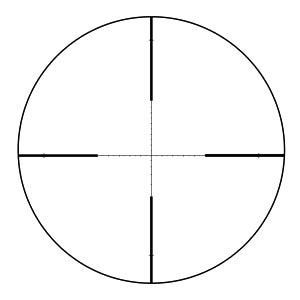
SIG ASP20 Final Thoughts
My expectations for the ASP20 were askew. I was constantly trying to compare it to my favorite .22LR bolt gun. The ASP20 is relatively quiet but the piston is louder than I would like. I am used to a suppressed .22LR bolt gun shooting subsonic ammo.
At first, I was a little annoyed with my impatience trying to shoot the ASP20. The cadence is different. I have to pull away from the gun to break the barrel to load a new pellet. Then close the barrel and try to remember what I just tried to do in my last shot. However, once I relaxed and focused on my shooting technique I was able to hit small targets. Shooting air guns is a lot harder than I originally thought. Learning about Tom’s Artillery Hold helped a lot and is counter-intuitive to how I learned to shoot firearms.
Now that I am in CA I cannot shoot suppressed so an air rifle is as close as I can get without having to resort to going out of state. For that purpose I can see using the ASP20 would be useful for dispatching small rodents and varmints. It makes for a decent plinking gun as well. If you want to know more, go to SIG Sauer’s website.
We are committed to finding, researching, and recommending the best products. We earn commissions from purchases you make using the retail links in our product reviews. Learn more about how this works.
 Your Privacy Choices
Your Privacy Choices
